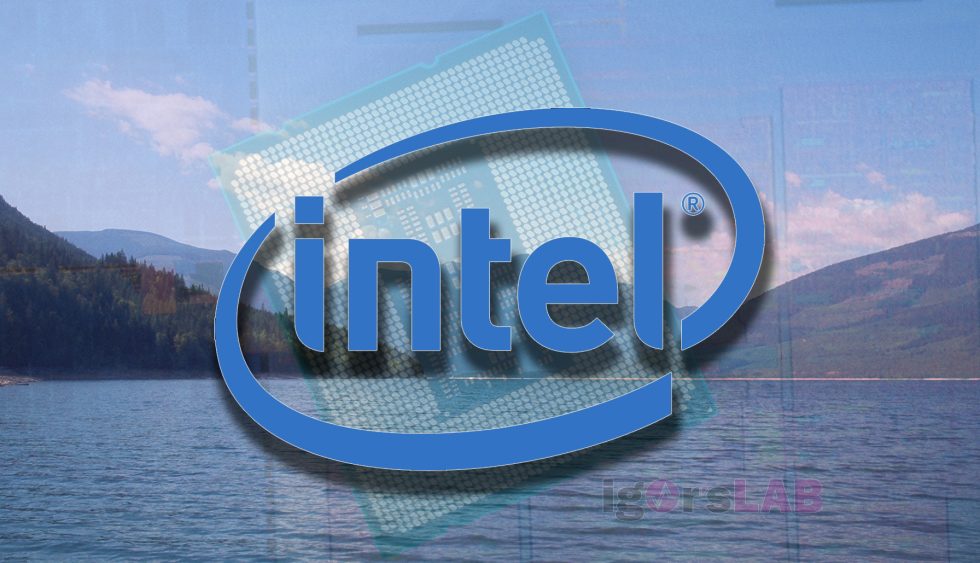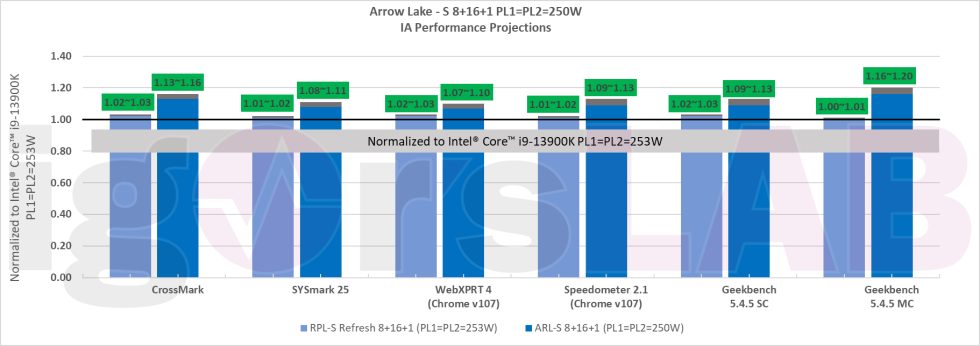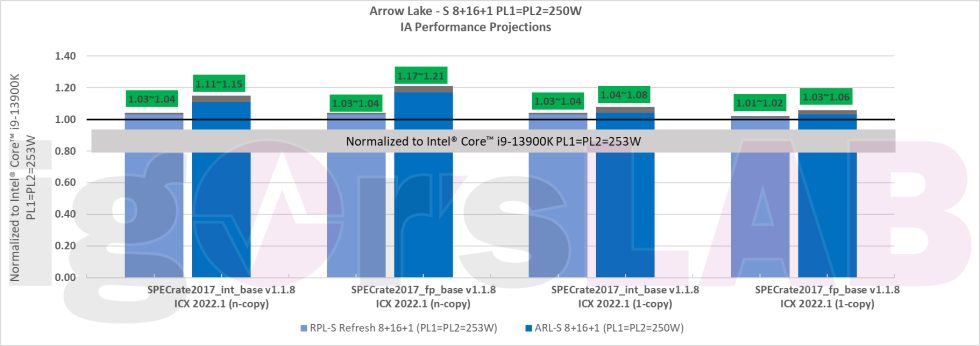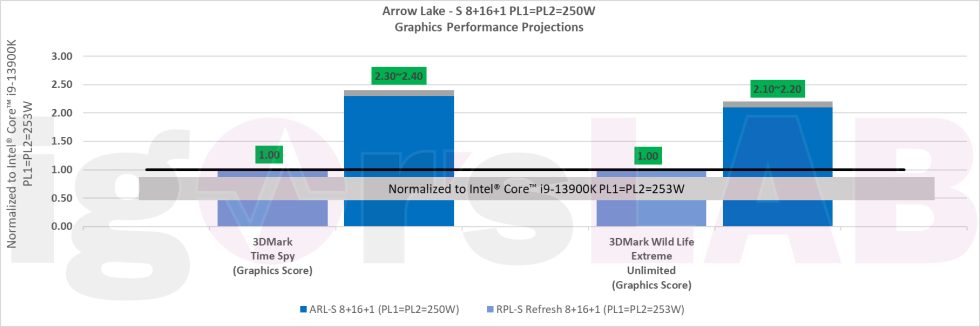The Raptor Lake refresh is expected to arrive this year as the 14th CPU generation for the desktop. But the real successor, Arrow Lake-S for desktop, is also increasingly materializing along with the new 800 series chipset, which again brings a new processor socket, of which I will soon publish the exact details including the drawings and data. Meteor Lake maintains its focus on the notebook segment, which will not change anymore and is therefore not the subject of this article.
Videocardz.com had recently published various information about the command sets used in Arrow Lake and Lunar Lake as an excerpt from a PDF, which once again confirms that both AVX-VNNI-INT16, SHA512, SM3 and SM4, which focus on AI loads and hashing functions, are supported by both series. The integration of AVX-VNNI into the Arrow Lake and Lunar Lake processors is particularly noteworthy. This extension of the instruction set boosts the performance of inference tasks in neural networks by providing specialized capabilities for 8-bit and 16-bit integer operations.
This implies that applications that rely on artificial intelligence, machine learning, and deep learning algorithms can expect an acceleration of processing and an increase in efficiency. However, it is not yet known how this could affect performance in individual application scenarios.
Important preliminary note
However, I have been given internal performance projections that are supposed to forecast the performance of a current Core i9-13900K with the appropriate models of Raptor Lake Refresh and Arrow Lake. Since this is not public PR material, these projections can certainly be considered realistic, even though the finished CPU could of course perform differently. But at least it is more than just a rough benchmark.
Performance Projections
In this projection, Intel has limited the PL1 and PL2 for the two Raptor Lake S variants to 253 watts and for Arrow Lake to 250 watts. Interestingly, Arrow Lake is also granted a rather high power consumption, which also seems to confirm an important part of the specs where the power consumption is hardly expected to decrease. The large models with 8 performance cores and 16 efficiency cores are being compared. Everything was normalized based on the current Core i9-13900K as the 100% mark.
We see on the first graph that Raptor Lake S Refresh is internally granted between one and two percent more performance, which results maximally from the clock speed increase and ultimately should not be more than up to 6 GHz for the processor. Whether and when we might see a KS model with 6.2 GHz, only the yield goddess and the marketing department at Intel know. Arrow Lake S is more interesting. Because here we are already in the range of seven to 20 percent performance increase, with the largest increase expected to be in multi-core operation.
The SPEC CPU benchmark package used in the second slide contains standardized, CPU-intensive suites for measuring and comparing compute-intensive performances that strain a system’s processor, memory subsystem, and compiler. This enables a comparative measurement of compute-intensive performance across as broad a spectrum of hardware as possible, using workloads derived from real user applications. The SPECrate 2017 Integer and Floating-Point Suites listed here measure throughput or work per unit of time.
We see that Raptor Lake Refresh can gain between one and four percent, depending on the suite. With Arrow Lake, it is, depending on the application, between three and a remarkable 21 percent. Arrow Lake records the biggest increase in the floating-point runs, while the performance of Raptor Lake Refresh almost stagnates. Here, the increase develops almost evenly, which can only be attributed to the clock speed increase.
But what about the integrated graphics? Intel also provides a slide for this, where the increases are already larger. Here, the same GPU (HD700 series) as in the Core i9-13900K with 32 EU is apparently used in the Raptor Lake Refresh and the clock rate should also remain the same at 1.65 GHz peak. Because the graphics set both CPUs at the same performance. However, the following jump to Arrow Lake is immense! With Xe LP, Arrow Lake will apparently be the first desktop CPU where the IGP is mounted using Foveros Packaging. There has already been a lot of speculation about the number of EU, but the slide shows a whopping 220 to 240% performance compared to the 100% of Raptor Lake. This is more than a doubling, but it does not yet allow for exact statements about how the graphics tile will be exactly constructed, as the clock rate is still unknown.
Of course, there will (have to) be a new socket for Arrow Lake S as well, so we have now arrived at LGA1851. But that is already another story that will follow here shortly. Because even though the mechanical dimensions have largely remained the same, the business of the cooler and accessory industry is of course also secured this time: among other things, the Z-height and also the contact pressure will change again. Thus, while the coolers are somewhat compatible in themselves, they are only compatible with a new mounting kit.




































120 Antworten
Kommentar
Lade neue Kommentare
Urgestein
Urgestein
Veteran
1
Veteran
Veteran
Veteran
Neuling
Urgestein
Urgestein
Urgestein
Urgestein
Urgestein
Urgestein
Mitglied
Mitglied
Mitglied
Veteran
Mitglied
Alle Kommentare lesen unter igor´sLAB Community →